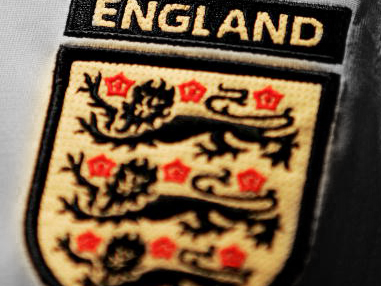England vs Scotland, 1872: Why the Three Lions’ first ever international remains so significant 999 games later
Although the riches on offer in 2019 bear little resemblance to those way back when, the routes of football’s commercialisation can be directly traced back to that late November day

The world has changed a lot since 1872 – but some things have stayed steadfastly unaltered.
England meet Montenegro at Wembley on Thursday night. It will represent an historic landmark for the national team, a 1000th fixture, 147 years after the team’s first full international against Scotland at Hamilton Crescent, the home of the West of Scotland Cricket Club.
The match itself was obviously hugely significant but of equal importance was the impact the fixture had, not just on the international game, but on the future of sport itself. And although the riches on offer in 2019 bear little resemblance to those way back when, the routes of football’s commercialisation can be directly traced back to that late November day.
“It was the first time that supporters had been charged an entry fee to watch a game of football,” says Scottish football historian, John Lister. “Before then, no one really believed that people would pay money to see sport being played. It put the game on a commercial footing that was previously unthinkable.
“When a huge crowd turned up, everyone suddenly start to see the possibilities and the kind of money that could be made. The ears of businessmen pricked up.”
The FA Cup final had been held in March of that year, with spectators being charged a shilling to enter the Kennington Oval to watch Wanderers take on the Royal Engineers. A crowd of just 2000 people, though, did little to suggest at what was to follow.
England and Scotland had met before but the matches, which were all played south of the border, were poorly marketed and attended largely by the friends and families of the players. This game, though, was completely different, not least because all the Scottish players selected were from Scotland rather than London, as had been the case in the earlier fixtures between the two countries.
“It was held at Hamilton Crescent because it was one of very few enclosed venues available to the organisers,” says Lister. “It allowed people to pay at the gate – it also handed a cricket ground in Scotland a unique place in English and Scottish football history.
“Technically, you could argue that this wasn’t an international at all, given that the Scottish Football Association (SFA) wasn’t formed at the time, and wouldn’t come into being until the following year. The Football Association had been formed nine years earlier but hadn’t really done a great deal in that time. It had spent most of its existence arguing about the laws of the game.”
Once the Scottish FA was up and running, it wasted little time in introducing the Scottish Cup, which was played for the first time during the 1873/74 season. The first Scottish League was competed for in 1890, two years after the introduction of its equivalent in England.
Back to a cold November afternoon on St Andrew’s Day, though, and with England lining up against a team made up largely of players from Queens Park, fans expectantly awaited a historic kick-off. Goals would surely follow.
Or maybe not.
The London correspondent at Bell’s Life, described the action. “A splendid display of football in the really scientific sense of the word, and a most determined effort on the part of the representatives of the two nationalities to overcome each other,” he wrote. “The only thing which saved the Scotch team from defeat, considering the powerful forward play of England, was the magnificent defensive play and tactics shown by the backs, which was also taken advantage of by the forwards.”
With England’s team comprising four players from Oxford University, a goalkeeper from Hertfordshire Rangers and a striker from the 1st Surrey Rifles, it was an eclectic XI that bears absolutely no similarities with the team that will line-up for England’s final home qualifier this evening.
The fact that this cobbled-together team failed to break the Scots down should perhaps be no surprise – despite an apparent weight-advantage noted by the hacks fortunate to attend that first match.
“...the England side had a distinct weight advantage – estimated from the press box at an average two stone – while the Scots proved durable, wiry and tough,” wrote Brian James in his book England v Scotland.
Even in these very early days of commercialisation, though, it’s refreshing to see that disputes didn’t take long to surface.
“There are no photos of that first match,” says Lister. “A photographer had been lined up to attend but there was no agreement on how they would be sold. So he didn’t turn-up.”
A 0-0 draw suggests he didn’t miss much. Apart from a bumper pay day.
Subscribe to Independent Premium to bookmark this article
Want to bookmark your favourite articles and stories to read or reference later? Start your Independent Premium subscription today.

Join our commenting forum
Join thought-provoking conversations, follow other Independent readers and see their replies